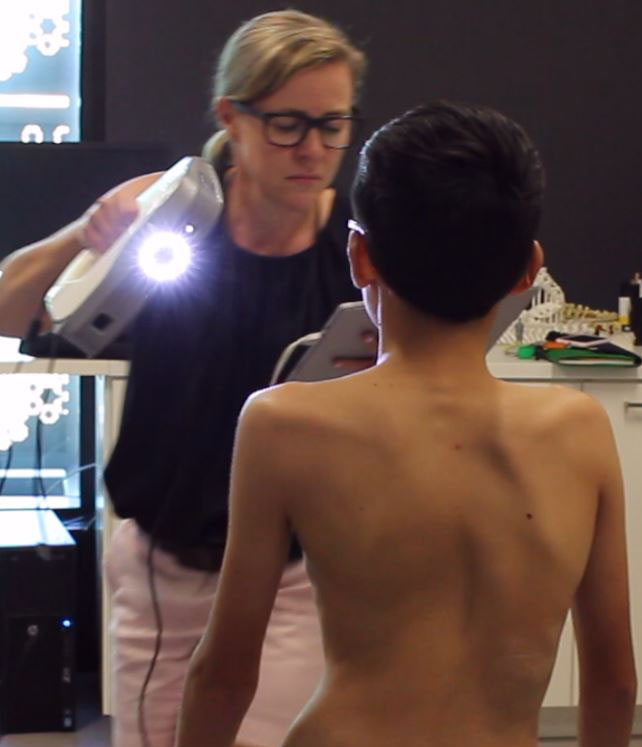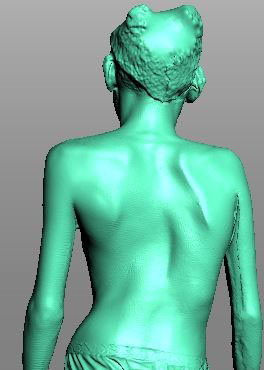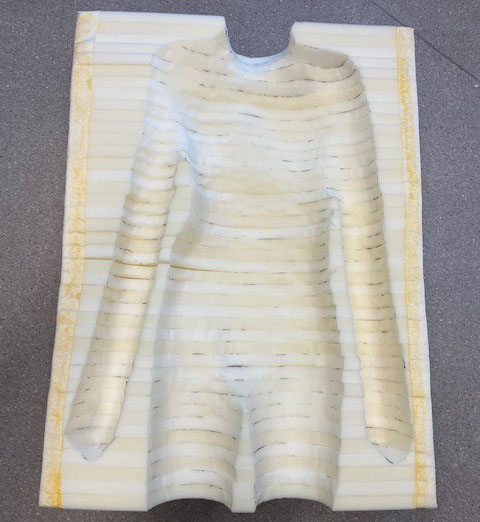QUT biomedical engineers with an industry partner are solving a major problem for young patients with unusual body shape undergoing corrective spinal surgery.
- Patients with unusual body shapes risk skin injury during lengthy corrective surgery
- Optimal positioning during surgery crucial to surgical success
- Solution to preventing pressure injury the product of long-running industry partnership
- Bespoke support mattress conforms exactly to young patients' anatomy.

Associate Professor Paige Little performs a 3D surface scan to capture images of the patient's body shape
QUT Associate Professor Paige Little, from the Biomechanics and Spine Research Group in the School of Mechanical, Medical and Process Engineering, has led a long-running research program with mattress manufacturer Sealy using state-of-the-art imaging technology to understand the ideal body position and support to enhance sleep quality.
Professor Little said they believed the newly developed process to design and manufacture a patient-specific theatre support mattress was likely to be the first in the world.
"After 10 successful spinal surgeries on patients from two to 15 years old, we have successfully refined this technology and are working to share it with other hospitals where this type of surgery is performed," Professor Little said.
"Our future projects will seek to use this technology for other types of surgeries and intra-operative positioning requirements, and for both children and adults."

Professor Little said that during research with Sealy they were asked by Brisbane Children's Hospital senior spinal consultant Dr Geoffrey Askin if the team could create a custom-made support mattress for a 10-year-old patient with anatomical abnormalities who desperately needed spinal surgery.
"Optimal positioning of a patient during spine surgery is vital because the patient must lie for a lengthy period on their stomach," Professor Little said.
"When the patient has abnormalities in their body structure such as prominent ribcage or sternum it is particularly difficult to prevent tissue injuries caused by prolonged pressure on the skin.
"At present, commercially available surgical positioning equipment is not adequate to protect these patients from pressure injuries and medical professionals use a combination of theatre supports, such as gel pads, to position a patient."
Professor Little said the team pivoted the research they were doing with Sealy to take up the challenge.

"We developed an innovative process involving 3D surface scanning of the patient, 3D simulation, and computer-aided modelling, to create a customise-designed support to hold the patient safely and reduce skin damage during surgery," she said.
"Sealy technicians then used the 3D model to hand cut and piece together multiple layers of soft hypo-allergenic foam to conform exactly to the young patient's anatomy.
Dr Askin, who is also clinical research director for the QUT Biomechanics and Spine Group, said the surgeries were successful with the surgeon and anaesthetist reporting sufficient clearance for the administration of the anaesthetic and excellent surgical access.
"In each patient, there was no evidence of soft tissue overload over bony prominences and implanted devices after the surgery."
Professor Little said that while the design of the mattresses was a bespoke process, it could be applied by orthopaedic or rehabilitative engineers to create customised support devices not only for intra-operative care but also post-operative support for patients of all ages with complex support needs.






